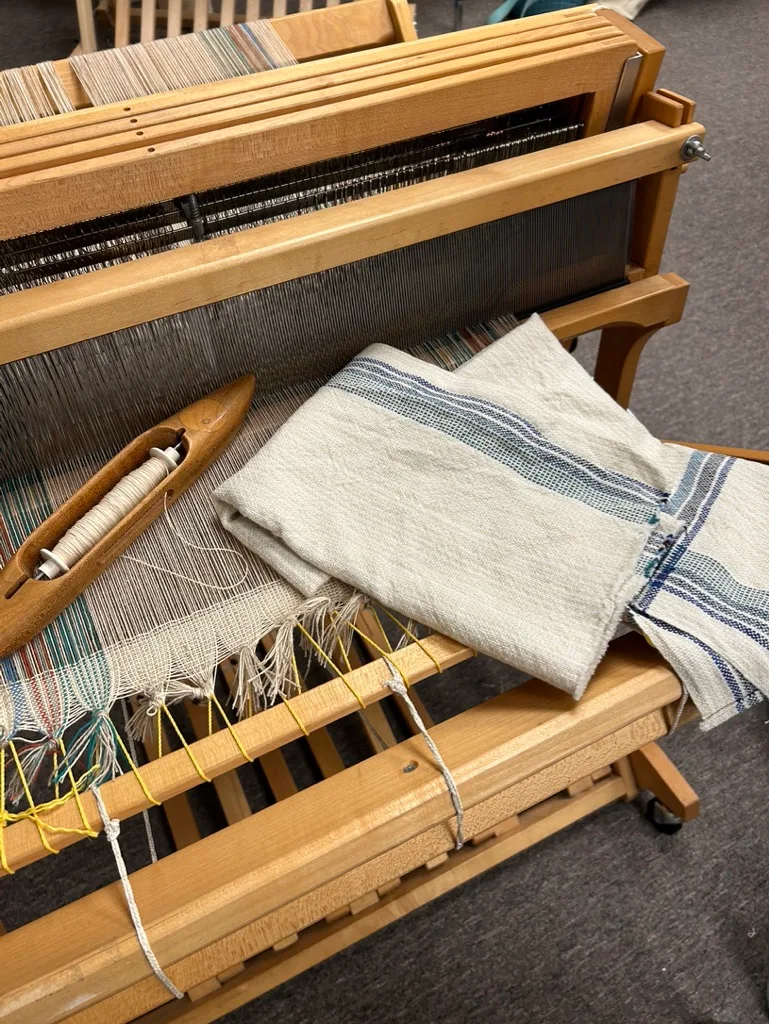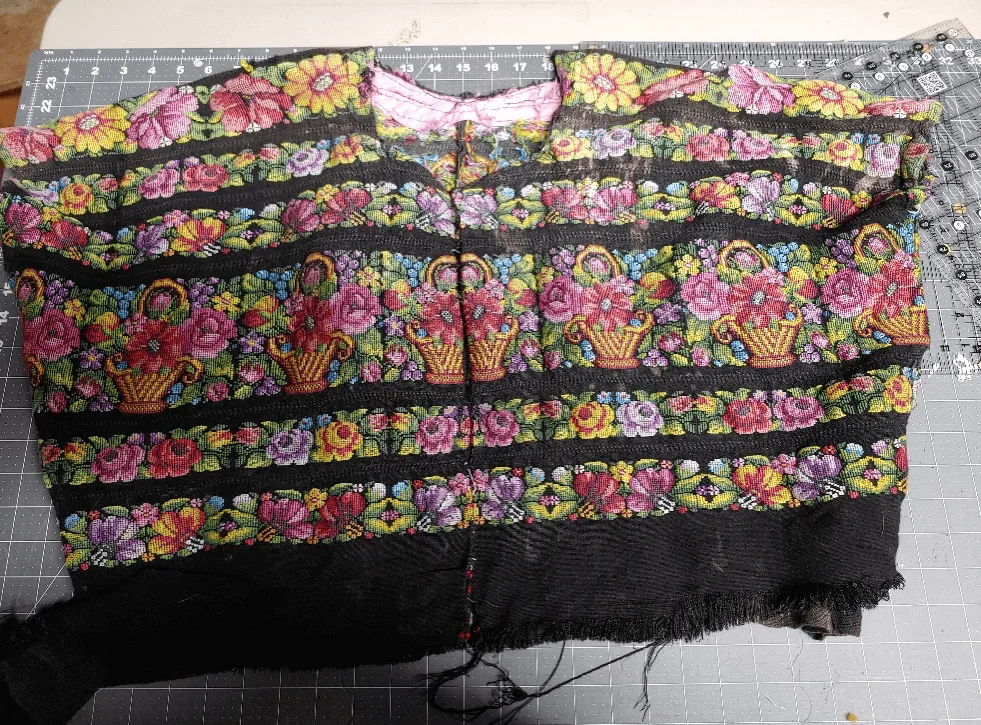Weavers Just Want to Have Fun
Weavers often feel like they’re dancing when treadling and throwing the shuttle on a fully dressed floor loom. Yarn is threaded through the heddles, sleyed though the reed, and heddle shafts are tied to the treadles.
Exploring Floor and Table Loom Weaving Special Interest Group (SIG) provides support to those wanting to feel more comfortable with the dance steps. And the Multi Shaft SIG is for those ready to boogie.
Back in Roman times band weavers discovered they could change the shed by carving slots into a piece of wood and poking holes into the reeds, alternating the threading through slots and holes. Around 1929 Kircher in Germany created a loom for beginners which they called a rigid heddle loom and in 1953 in the US Spears created the rigid heddle toy loom I have that can be used to create cloth. The rigid heddle loom started gathering interest in the 70s and 80s when weavers started learning how they could rock this loom.
History of the Rigid Heddle Loom
At the Rigid Heddle SIG we’ve redefined the F-Word because we have so much FUN exploring what this portable loom can do on its own and when expanded with pickup sticks and string heddles. You can do some serious color and weave gyrations. Easily create samples with a short direct warp. Use various things for warp or weft and really jive things up with a vari dent reed. Weft faced weaving is explored and some who love using other types of looms to take this to the next level jump into the Tapestry SIG. Warp based weaving is also possible and many weavers prefer exploring this on inkle and card looms at the Portable Fibers SIG. Others at that SIG are using foam Kumihimo looms to make the round and flat braids the hang out at the guild house.
You can do more than make pot holders with that childhood loom. Or you could get loomy and explore other possibilities it’s all about having FUN.
Guild on,
Margie






